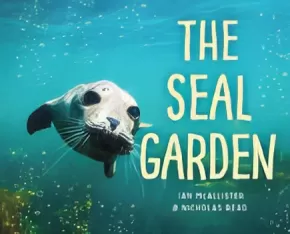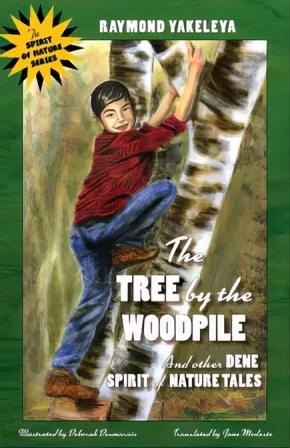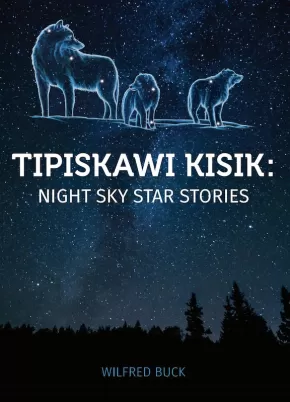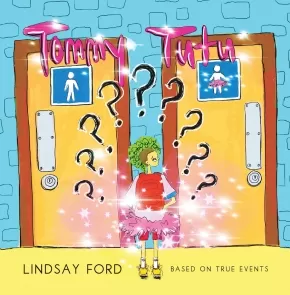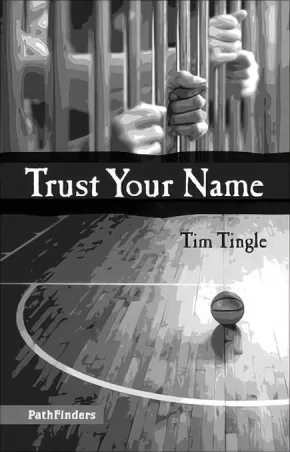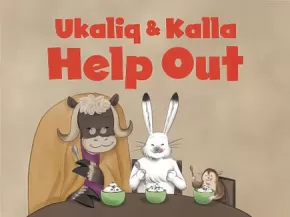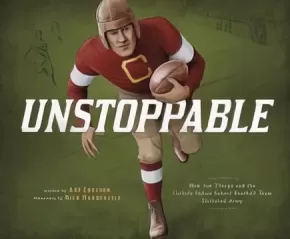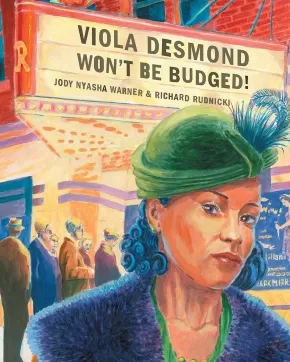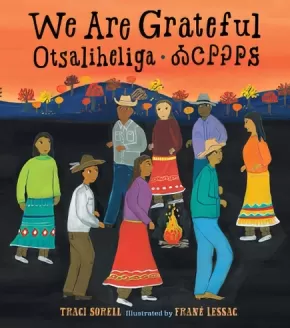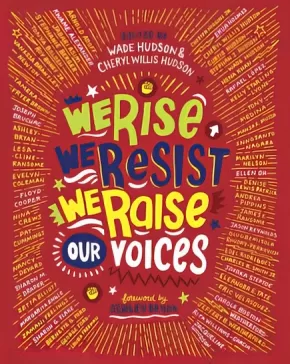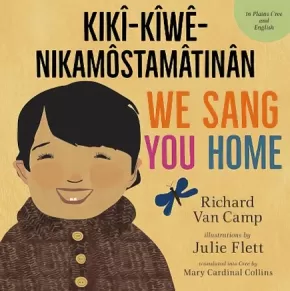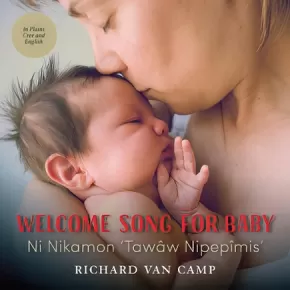
Browse Books for Kids
1696
-
1710
of
2601 Results;
Sort By
Go To
of 174
The Orange Shirt Story
$19.99
Artists:
Format:
Paperback
Text Content Territories:
Indigenous Canadian; First Nations; Salish; Interior Salish; Secwepemc (Shuswap); Stswecem'c Xgat'tem;
ISBN / Barcode: 9780993869495
Synopsis:
Synopsis:
When Phyllis Webstad (nee Jack) turned six, she went to the residential school for the first time. On her first day at school, she wore a shiny orange shirt that her Granny had bought for her, but when she got to the school, it was taken away from her and never returned. This is the true story of Phyllis and her orange shirt. It is also the story of Orange Shirt Day (an important day of remembrance for First Nations and non First Nations Canadians).
Reviews
"The book includes a brief history of the Secwepemc people, St. Joseph’s Residential School, and a glossary and conversation starters. A must for elementary school teachers. " - Canadian Indigenous Books for Schools 2020/2021
Educator Information
Recommended for grades 2 to 5.
This resource is also available in French: The Orange Shirt Story (French) / L'histoire Du Chandail Orange
Recommended in the Canadian Indigenous Books for Schools 2020/2021 resource list for grades 1-5 in the areas of English Language Arts, Social Studies, and Career Education.
Additional Information
8.5" x 11" | 44 pages
The Seal Garden (HC) (2 in Stock)
$19.95
Artists:
Format:
Hardcover
ISBN / Barcode: 9781459812673
Synopsis:
Synopsis:
Where does a harbor seal hide from storms and hungry orcas?
When storms roar and orcas are on the prowl, it's the seal gardens of the Great Bear Sea that provide safety and shelter to sea lions, otters, a variety of seals and other sea mammals.
Ian McAllister's glorious photographs reveal the beauty and mystery of this rarely seen place of refuge. This is the third title in the My Great Bear Rainforest series, following Wolf Island and A Bear's Life.
Reviews
"The expert photography in these books is the perfect medium to tell the stories of survival in this unique wild place…The books in the 'My Great Bear Rainforest' series can effectively be shared with younger listeners who will find the photos captivating and whose curiosity will be aroused by the infrequently seen settings. Highly Recommended." — CM Magazine, December 2017
"The concept of a seal garden will be new to most viewers, and the illustrations will intrigue children and adults alike. McAllister's handsome photos, particularly those taken underwater, offer some unusual and almost otherworldly effects of light and color. — Booklist, December 2017
"Playful images of seals abound. Even the coral, kelp, and stones are shot with care…McAllister and Read's love for the wildlife of the Great Bear Rainforest is evident in their respect for their subjects. Recommended for nature lovers and those that need encouragement to dip their toes into nonfiction." — School Library Journal, January 2018
"The writing skillfully incorporates facts with a story that promotes understanding of nature. This book is highly recommended for school and public libraries. It would be an appropriate gift for any child. Children are curious about nature and love a good story. The Seal Garden provides for both." — Resource Links, February 2018
Educator & Series Information
This is the third title in the My Great Bear Rainforest series.
Books in this series include:
Wolf Island
A Bear's Life
The Seal Garden
A Whale's World
Recommended Ages: 5-8
Additional Information
32 pages | 10.75" x 8.75" | Hardcover (HC)
The Tree by the Woodpile: And Other Dene Spirit of Nature Tales
$16.95
Artists:
Format:
Paperback
Text Content Territories:
Indigenous Canadian; First Nations; Dene;
ISBN / Barcode: 9781988824031
Synopsis:
Synopsis:
“With the passing of many of our Elders, the telling of these stories becomes more valuable than ever.” — Raymond Yakeleya
The Tree by the Woodpile is a story about a First Nations boy who is told an enchanting tale by his grandmother about how an old tree by the woodpile provides food and shelter for the birds and animals of the North. Other stories in the book are “The Wolf,” and “The Mountain, the Wind, and the Wildflowers.” The stories are suffused with Newet'sine, the Creator and Spirit of Nature, who brings a message of how we must to cherish our land.
Educator & Series Information
The book, written in English and Dene for middle-grade children, ages 7 to 12, supports the "First Peoples Principles of Learning," particularly recognizing the role of Indigenous knowledge and learning embedded in memory, history, and story.
Recommended for these subject areas: English Language Arts, Science, Social Studies.
This is the first book in the UpRoute Indigenous Spirit of Nature Series.
Additional Information
64 pages | 5.50" x 8.50" | 25 b&w illustrations |18 colour illustrations | Dene translation by Jane Modeste (Dene).
Tipiskawi Kisik: Night Sky Star Stories
$15.00
Format:
Paperback
Text Content Territories:
Indigenous Canadian; First Nations; Cree (Nehiyawak);
ISBN / Barcode: 9781927849460
Synopsis:
Synopsis:
Like the night sky above, Tipiskawi Kisik holds a myriad of tales rooted in an Ininew (Cree) perspective. An exploration of stars and constellations—and their associated mythologies—will greet you with age-old knowledge held by Indigenous people prior to European contact. Through Wilfred Buck’s creative, spiritual, and intelligent understanding of the stars, it will be easy to imagine yourself flying inside the Milky Way with Niska (the Goose) or chasing Mista Muskwa (the Great Bear), just like Tepakoop Pinesisuk (the Seven Birds). Above all, these stories can be passed on to the next generation, so they will know of the rich history, science practices, and culture of the Ininew people.
Additional Information
This is a collection of short stories (approximately 25 pages long) with supporting artwork/illustrations. While not aimed at young readers in terms of reading level, this book would support educators in their teaching of Indigenous astronomy to younger audiences, especially since each short story would work well as a read aloud and includes useful illustrations/diagrams of the night sky.
Tommy Tutu
 $18.00
$18.00

Artists:
Format:
Paperback
ISBN / Barcode: 9781775379607
Synopsis:
Synopsis:
One day, Tommy wears a pink tutu to school. After his mother expresses her concern, Tommy decides to wear it anyway. Bullying becomes a minor problem as Tommy discovers he has a bigger problem to face; which toilet should Tommy use? The girls’ or the boys’?
Inspired by a true story, this is a book about staying true to yourself. Tommy has to overcome a lot of things: nay-sayers, bullies, social norms, self-doubt; yet he stays true to himself.
Educator & Series Information
A forward-thinking book relevant in today’s changing world, Tommy Tutu inspires adults and children alike. Tommy Tutu is part of the Awkward+Awesome book series celebrating unlikely heroes and inner weirdos. A story about an awkward boy, an awesome tutu and how, together, they change the world.
Recommended for grades K to 4.
Additional Information
38 Pages | 8" x 8"
Tree Musketeers (5 in Stock) - ON SALE!
$9.50 $11.95
Format:
Paperback
ISBN / Barcode: 9781553805502
Synopsis:
Synopsis:
In this young reader novel, ten-year-old Jeanie Leclare has just moved to the West Coast from Saskatchewan. She's desperately lonely and longs for a new friend. When the girl sitting in front of her at school seems friendly, she feels a little better. Then an excavator arrives and demolishes the cute house next door. Everyone, including Jeanie's new friend, Isabelle, is aghast. But Jeanie has a secret, a secret that she knows will turn her new classmates against her. At recess time, the excavator heads for a huge and beautiful cedar next to the school. Isabelle leads a band of kids, including Jeanie, to stop it. That's when they discover Jeanie's secret: the contracting company that destroyed the house belongs to Jeanie's uncle and father. Jeanie promises her new classmates that she'll do whatever it takes to protect the cherished tree. Trouble is, she can't convince her uncle and father to agree not to cut it down. So now it's totally up to Jeanie and Isabelle to come to the cedar tree's defence. They are the Tree Musketeers.
Reviews
"Norma Charles shows exactly what it's like to feel new and different and judged, and leaves us knowing we're going to be okay" - Jennifer Mook-Sang
Educator Information
Recommended for ages 9 to 12.
Tree Musketeers is a successful portrait of kid-sized eco-warriors and finding one’s voice – a homespun tale of triumph with a touch of socially responsible charm.
Additional Information
110 pages | 5.25" x 7.63" | Paperback
Trust Your Name
$12.95
Format:
Paperback
Text Content Territories:
Indigenous American; Native American; Choctaw;
ISBN / Barcode: 9781939053190
Synopsis:
Synopsis:
After Bobby Byington's unforgettable winning high school season, Coach Robison recruits Choctaw players from several communities to play in a summer league. Coach selects the Panther as the team's mascot, saying, "To many Choctaws, young and old, the Panther is an elder watching over us, helping us when we are in need." As the team gels and they move to the national tournament, they find out they are up against more than other basketball teams. They must deal with racist taunts and unfair sportsmanship on the court. The situation comes to a head when, on the eve of a key game against a bullying opponent, two Choctaw players are arrested for robbery. Never doubting their innocence, Coach Robison asks, "Who can we trust, and how can we find the truth?"
Educator & Series Information
Reading Level: 2.5
Recommended Ages: 12-16
This is the fourth book in the No Name series, which is part of the PathFinders series. The PathFinders series of Hi-Lo (high interest, low readability) novels offers the following features:
• Indigenous teen protagonists
• Age appropriate plots
• 2.5 – 4.5 Reading Level
• Contemporary and historical fiction
• Indigenous authors
The PathFinders series is from an American publisher. Therefore, Indigenous terminology in the PathFinders books is not the same as Canadian Indigenous terminology. This prompts a useful teaching moment for educators in discussing appropriate terminology use in Canada. The recommended ages for books in the PathFinders series are 12-16.
Additional Information
166 pages | 6.00" x 9.00"
Ukaliq and Kalla Help Out - Nunavummi Reading Series
$10.95
Artists:
Format:
Paperback
Text Content Territories:
Indigenous Canadian; Inuit;
ISBN / Barcode: 9781772668896
Synopsis:
Synopsis:
Best friends Ukaliq and Kalla like to help out!
In this book, recurring characters Ukaliq and Kalla help their friend Muskox when she is sick. Ukaliq is enthusiastic; Kalla’s thoughtful preparations balance Ukaliq’s excitement!
Educator Information
This book is part of the Nunavummi Reading Series, a Nunavut-developed series that supports literacy learning while teaching readers about the people, traditions, and environment of the Canadian Arctic. It is a Level 11 book in the series.
Nunavummi Reading Series books have also been officially levelled using the Fountas & Pinnell Text Level Gradient™ Levelling System. This book's F&P Level is O.
Curriculum Connections: Language and literacy; Diversity; Indigenous perspectives; Identity; Community engagement; Roles and responsibilities.
Recommended for ages 5-7.
Additional Information
28 pages | 8.00" x 6.00"
Una Huna? What Is This?
$16.95
Artists:
Format:
Hardcover
Text Content Territories:
Indigenous Canadian; Inuit;
ISBN / Barcode: 9781772272260
Synopsis:
Synopsis:
Ukpik loves living in her camp in the North with her family and she especially loves thinking up names for her brand new puppy. When a captain from the south arrives to trade with Ukpik's father, she's excited to learn how to use forks, knives, and spoons.
At first, Ukpik enjoys teaching the other children how to use these new tools. But soon, she starts to wonder if they'll need to use the new tools all the time, and if that means that everything in camp will change.
After a conversation with her grandmother, Ukpik realizes that even though she will learn many new things, her love for her family and camp will never change - and it even inspires her to find a name for her puppy!
Educator Information
Recommended in the Canadian Indigenous Books for Schools 2019-2020 resource list as being useful for grades K-3 in these subject areas: English Language Arts and Social Studies.
This book is available in French: Una Huna?: Qu'est-ce-que c'est ?
Additional Information
36 pages | 8.00" x 9.00"
Unstoppable: How Jim Thorpe and the Carlisle Indian School Football Team Defeated Army
$9.95
Artists:
Format:
Paperback
Text Content Territories:
Indigenous American; Native American; Meskwaki (Fox); Sac (Sauk);
ISBN / Barcode: 9781543504132
Synopsis:
Synopsis:
In the autumn of 1912, the football team from Carlisle Indian Industrial School took the field at the U.S. Military Academy, home to the bigger, stronger, and better-equipped West Points Cadets. Sportswriters billed the game as a sort of rematch, pitting against each other the descendants of U.S. soldiers and American Indians who fought on the battlefield only 20 years earlier. But for lightning-fast Jim Thorpe and the other Carlisle players, that day's game was about skill, strategy, and determination. Known for unusual formations and innovative plays, the Carlisle squad was out to prove just one thing -- that it was the best football team in all the land.
Awards
- 2018 American Indians in Children's Literature winner
- 2018 The Children's Book Podcast winner
- 2019 Virginia Library Association winner
Educator Information
Recommended Ages: 6-10
Additional Information
40 pages | 11.00" x 9.00"
Viola Desmond Won't Be Budged!
$9.95
Artists:
Format:
Paperback
ISBN / Barcode: 9781773060354
Synopsis:
Synopsis:
Viola Desmond was one brave woman! Now come on here, listen in close and I’ll tell you why …
In Nova Scotia, in 1946, an usher in a movie theater told Viola Desmond to move from her main floor seat up to the balcony. She refused to budge. Viola knew she was being asked to move because she was black. In no time at all, the police arrived and took Viola to jail. The next day she was charged and fined, but she vowed to continue her struggle against such unfair rules.
Viola’s determination gave strength and inspiration to her community at the time. She is an unsung hero of one of Canada’s oldest and most established black communities. Like Claudette Colvin and Rosa Parks, who many years later, in 1955, refused to give up their bus seats in Alabama, Desmond’s act of refusal awakened people to the unacceptable nature of racism and began the process of bringing an end to racial segregation in Canada.
Reviews
"Rudnicki’s vivid, dramatic art intensifies the danger that Desmond’s stubborn determination brought her, and it lends itself well to the warm recounting of the unnamed narrator.” — Booklist
“Varying perspectives heighten the emotional intensity, as do the excellent layout and design. This unique offering will be of particular value when studying women’s or black history.” — School Library Journal
“Desmond’s story should prove eye-opening to readers whose civil rights references are limited to American figures.” — Publishers Weekly
Educator Information
Recommended for ages 5-9.
An afterword provides a glimpse of African Canadian history.
The African Canadian community in Nova Scotia is one of Canada's oldest and most established black communities. Despite their history and contributions to the province the people in this community have a long experience of racially based injustice.
Additional Information
32 pages | 8.00" x 10.00"
We Are Grateful: Otsaliheliga
$21.99
Artists:
Format:
Hardcover
Text Content Territories:
Indigenous American; Native American; Cherokee; Cherokee Nation (Cherokee Nation of Oklahoma);
ISBN / Barcode: 9781580897723
Synopsis:
Synopsis:
The Cherokee community is grateful for blessings and challenges that each season brings. This is modern Native American life as told by an enrolled citizen of the Cherokee Nation.
The word otsaliheliga (oh-jah-LEE-hay-lee-gah) is used by members of the Cherokee Nation to express gratitude. Beginning in the fall with the new year and ending in summer, follow a full Cherokee year of celebrations and experiences. Written by a citizen of the Cherokee Nation, this look at one group of Native Americans is appended with a glossary and the complete Cherokee syllabary, originally created by Sequoyah.
Awards
- 2019 Sibert Honor Book
- NPR's Guide to 2018's Great Reads
- Kirkus Reviews Best Books of 2018
- 2018 Book Launch Award (SCBWI)
Reviews
"According to storyteller Sorell, the Cherokee people always express gratitude for the little things they are given by saying the phrase, "Otsaliheliga," or "we are grateful." Raised in the Cherokee Nation, Sorell intentionally crafts a narrative that simultaneously embraces modernity and a traditional presentation of Cherokee community and way of life. Throughout, the measured text reminds readers that in all things "we say otsaliheliga." Colorful, folk art-style illustrations show Cherokee people during ceremonies, in family gatherings large and small, and outdoors enjoying each of the four seasons, always expressing gratitude. The scenes are contemporary; one shows a father taking care of his children, engaging in a positive parenting role, while another depicts a family seeing off a relative who is leaving for deployment in the military, underscoring that Cherokee people serve their country. Children participate in rites and in family outings with adults, and they also play traditional games such as stickball and plant strawberries, a practice that reminds their people to embrace peace with one another. The variety of skin tones represented in the illustrations likewise depicts a present-day reflection of the diversity that exists within the Cherokee people. Occasional Cherokee words are written in Romanized form, phonetically, in Cherokee characters, and in English—a lovely grace note. A gracious, warm, and loving celebration of community and gratitude. —Kirkus Reviews
"An extended family engages with activities and traditions that express gratitude and carry on Cherokee history and culture, such as stomp dancing at the Great New Moon Ceremony, basket weaving, making corn-husk dolls, and playing stickball. The book underscores the importance of traditions and carrying on a Cherokee way of life while simultaneously incorporating modernity and challenging dated media images of Indigenous people. Here, a father sporting an earring and a topknot minds the children; a family bids goodbye to a clan relative who deploys with the U.S. military. Skin colors range from light to dark, visually underscoring the book’s message of diversity and inclusion. Staying firmly upbeat and idyllic, the cheerful, richly detailed gouache illustrations in bright, saturated colors cycle through the seasons, beginning with the Cherokee New Year in autumn. The text includes several Cherokee words; a line of text in a smaller font along the bottom of the page provides each word as written in the English alphabet, its phonetic pronunciation, the word as written in the Cherokee alphabet, and its definition. A glossary, an author’s note on Cherokee culture, and a complete Cherokee syllabary conclude this attractive and informative book." —Horn Book
"In Cherokee culture, Sorell shares, the expression of gratitude is part of daily life and extends from elaborate celebrations to struggles to ordinary life moments. She organizes her debut picture book by seasons, beginning with the fall, which is a time for collecting foliage for basket making and remembering those who suffered on the Trail of Tears. It also contains the Cherokee New Year and the Great New Moon Ceremony, a celebration of renewal and coming together. Each season section starts with the name of the season in Cherokee, an expression of gratitude for the change in nature, and subsequent pages describing community activities pertinent to that season. Lessac's folkloric illustration in bright gouache colors stands in pleasing contrast to the book’s contemporary feel and setting. The text reads like poetry but has a gentle instructional dimension to it. On many pages, Cherokee words are accompanied by English translations, pronunciation guides, and Cherokee syllabary. Back matter contains relevant explanations and provides good context, and the author's note sets past misrepresentations right" —Booklist
"This informative and authentic introduction to a thriving ancestral and ceremonial way of life is perfect for holiday and family sharing"—School Library Journal
Educator Information
Recommended for ages 3 to 7.
Also available in a boxed set as board books for ages 3 and under: We Are Grateful Otsaliheliga: Seasons (BB - Box Set)
Additional Information
| 32 pages | 9.88" x 10.00" |
We Rise, We Resist, We Raise Our Voices
$24.99
Editors:
Format:
Hardcover
Text Content Territories:
Indigenous American;
ISBN / Barcode: 9780525580423
Synopsis:
Synopsis:
Fifty of the foremost diverse children's authors and illustrators--including Jason Reynolds, Jacqueline Woodson, and Kwame Alexander--share answers to the question, "In this divisive world, what shall we tell our children?" in this beautiful, full-color keepsake collection.
What do we tell our children when the world seems bleak, and prejudice and racism run rampant? With 96 lavishly designed pages of original art and prose, fifty diverse creators lend voice to young activists.
Featuring poems, letters, personal essays, art, and other works from such industry leaders as Jacqueline Woodson, Jason Reynolds, Kwame Alexander, Andrea Pippins, Sharon Draper, Rita Williams-Garcia, Ellen Oh, Joseph Bruchac, and artists Ekua Holmes, Rafael Lopez, James Ransome, Javaka Steptoe, and more, this anthology empowers the nation's youth to listen, learn, and build a better tomorrow.
Reviews
"An anthology of poems, short stories, personal essays, and artwork by indigenous creators and creators of color that explores the struggles of the past through the experiences of those who lived through them and offers reassurance, encouragement, advice, and hope for young people facing our current political crisis. The editors are the founders of acclaimed small press Just Us Books." - We Are Kid Lit Collective, 2019 Summer Reading List
"A love song from children's literature's brightest stars to America's Indigenous children and children of color, encouraging them to be brave and kind."—Kirkus Reviews starred review
"Addressing complex topics with sensitivity and candor, this a necessary purchase for all libraries serving children."—School Library Journal, starred review
"Wade and Cheryl Willis Hudson, founders of Just Us Books, offer this empowering anthology to counter today’s often-unsettling political climate for children of varying ethnicities, faiths, identities, and abilities"—Publishers Weekly, starred review
"The attractive and accessible presentation will pull kids in; the wisdom they find inside will keep them engaged—and, it is to be hoped, motivated."—Horn Book, starred review
Educator Information
Recommended Ages: 8-12
Additional Information
96 pages | 7.75" x 9.75"
Authenticity Note: This work has received the Authentic Indigenous Text label because of the contributions of Indigenous peoples to this work. Contributions from many people, of varying ethnicities, faiths, etc., are included in this work also.
We Sang You Home / Kiki Kîweh Nikamôstamâtinân (2 in stock, Out of Print)
$8.95
Artists:
Format:
Paperback
Text Content Territories:
Indigenous Canadian; First Nations; Cree (Nehiyawak);
ISBN / Barcode: 9781459820142
Synopsis:
Synopsis:
In this sweet and lyrical book from the creators of the bestselling Little You, gentle rhythmic text captures the wonder new parents feel as they welcome baby into the world. A celebration of the bond between parent and child, this is the perfect song to share with your little ones.
Internationally renowned storyteller and bestselling author Richard Van Camp teams up with award-winning illustrator Julie Flett for a second time to create a stunning book for babies and toddlers.
Educator Information
This paperback book is a dual-language (English and Plains Cree) edition of the We Sang You Home board book.
Available in hardcover: We Sang You Home (HC)
Recommended for Grades K-2 for the following subject areas: English Language Arts, Indigenous Language, Social Studies.
"We Sang You Home is a gentle story about a parent's unconditional love for a child. The lullaby-style story is a great way to share connections between young readers and their adults." — The Dalai Lama Center
Additional Information
Translated by Mary Collins.
Authenticity Note: The text and images in this story are meant to appeal to and honour a variety of families, not only Indigenous families. This edition's addition of the Cree translation makes it a wonderful resource for Indigenous language learning.
Welcome Song for Baby / Ni Nikamon ‘Tawâw Nipepîmis’
$6.95
Format:
Paperback
Text Content Territories:
Indigenous Canadian; First Nations; Cree (Nehiyawak);
ISBN / Barcode: 9781459820104
Synopsis:
Synopsis:
From renowned First Nations storyteller Richard Van Camp comes a lyrical lullaby for newborns. Complemented with stunning photographs, this evocative is perfectly suited as a first book for every baby.
Educator Information
This paperback book is a dual-language (English and Plains Cree) edition of the board book Welcome Song for Baby.
Recommended for Grades K-2 for these subjects: English Language Arts, Indigenous Language, Social Studies.
Additional Information
Translated by Mary Collins.
Authenticity Note: The images and text in this story are not specifically Indigenous. The addition of the Cree translation to this new edition, however, makes it a wonderful Indigenous language learning resource.
Sort By
Go To
of 174




